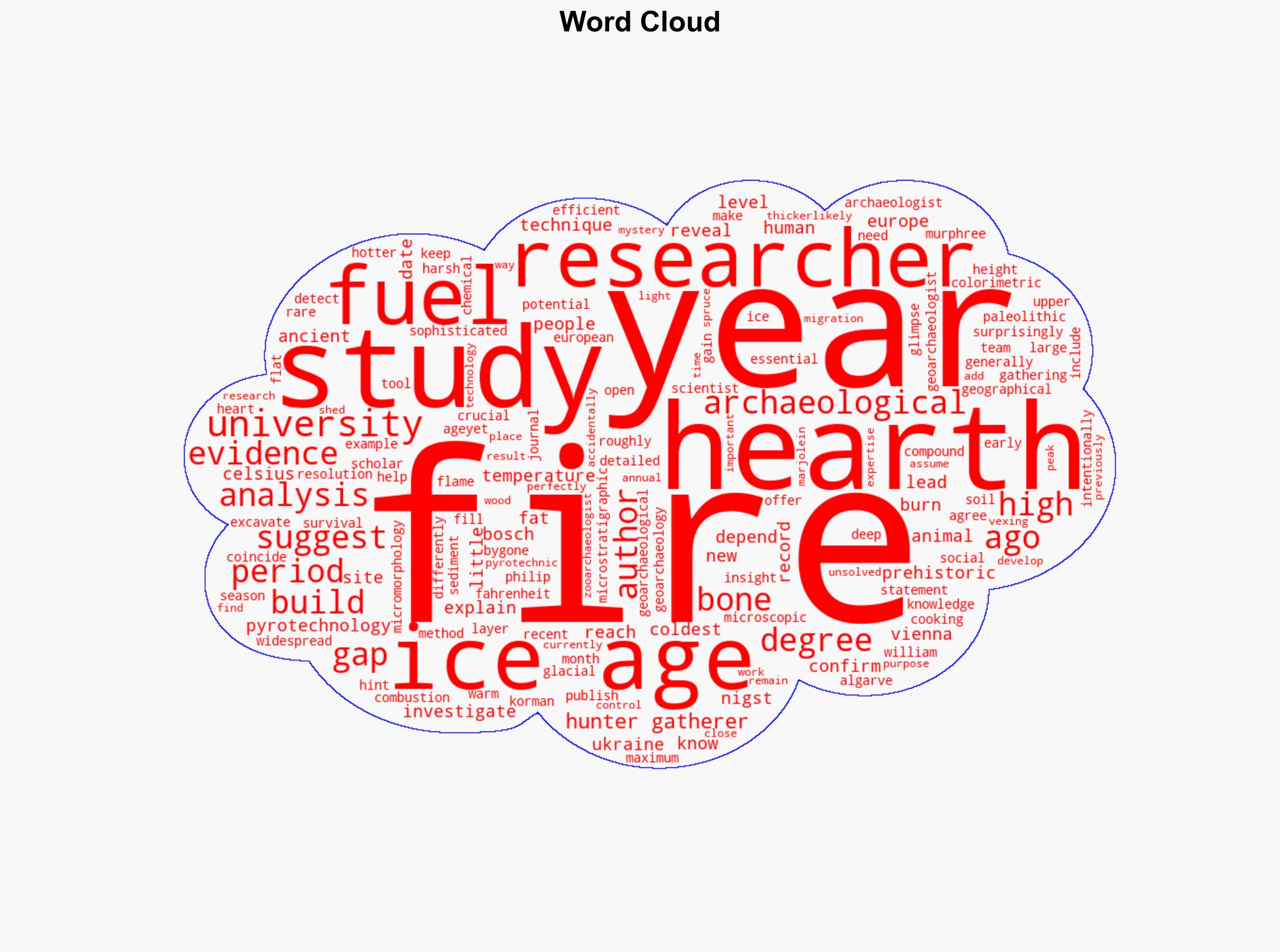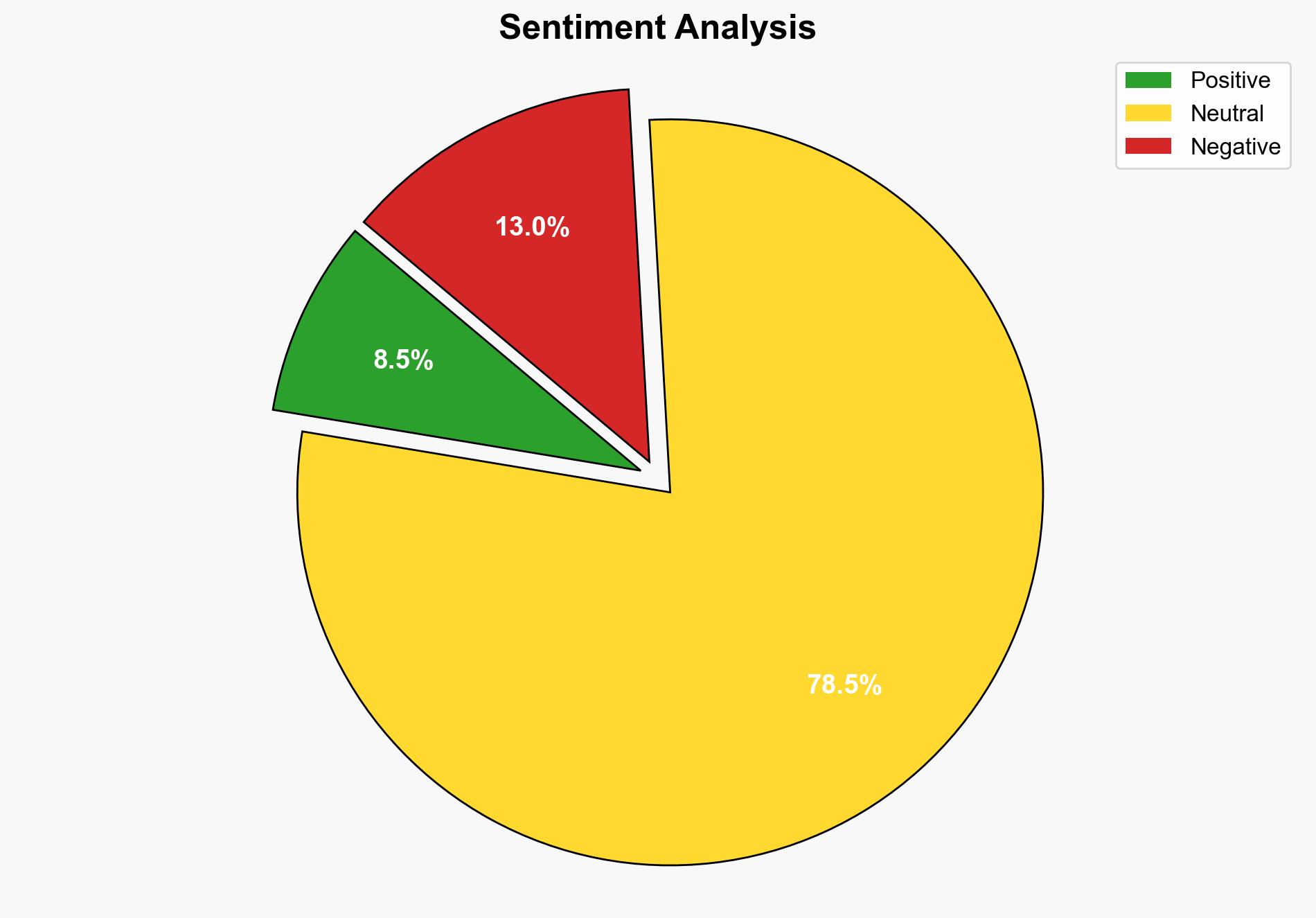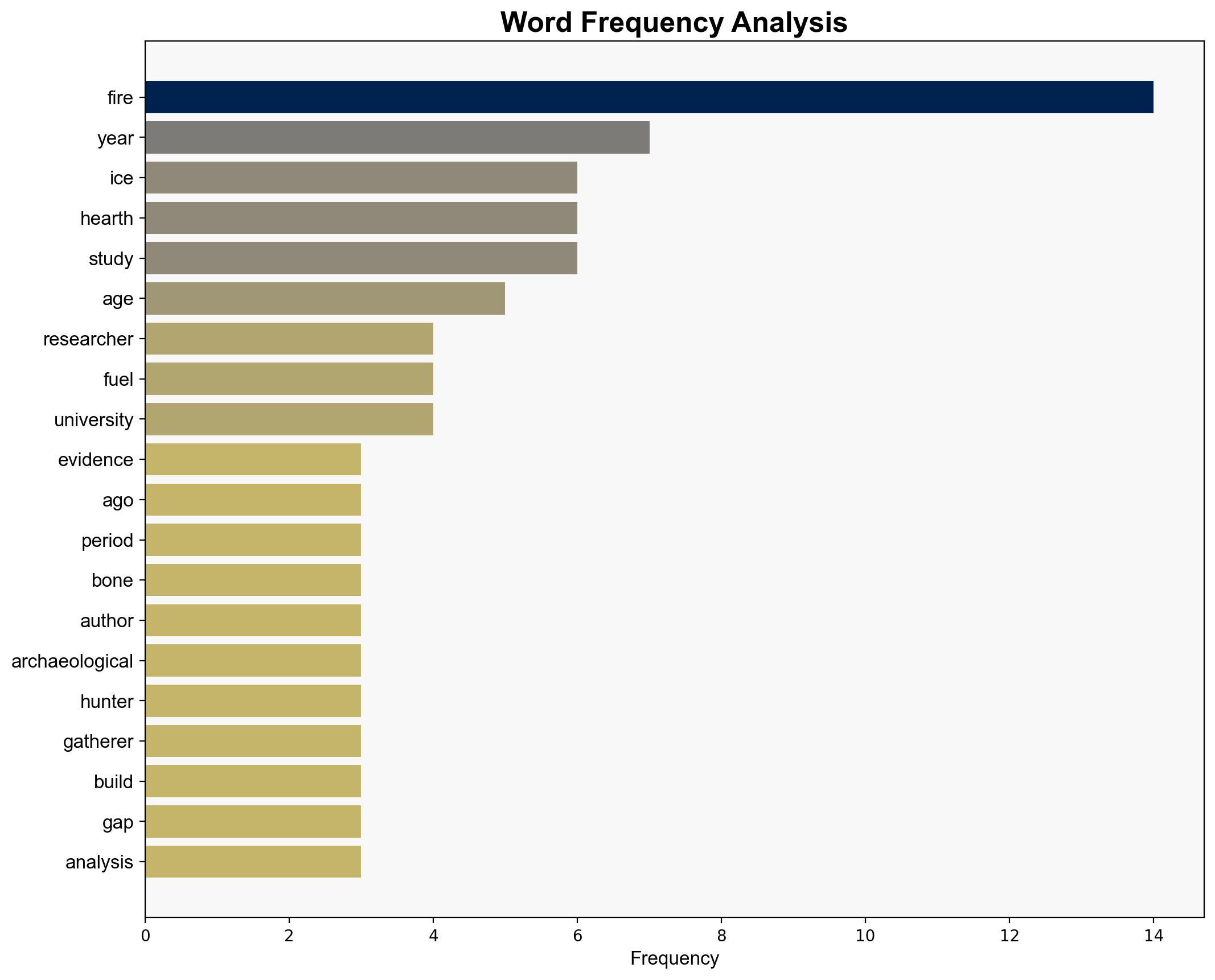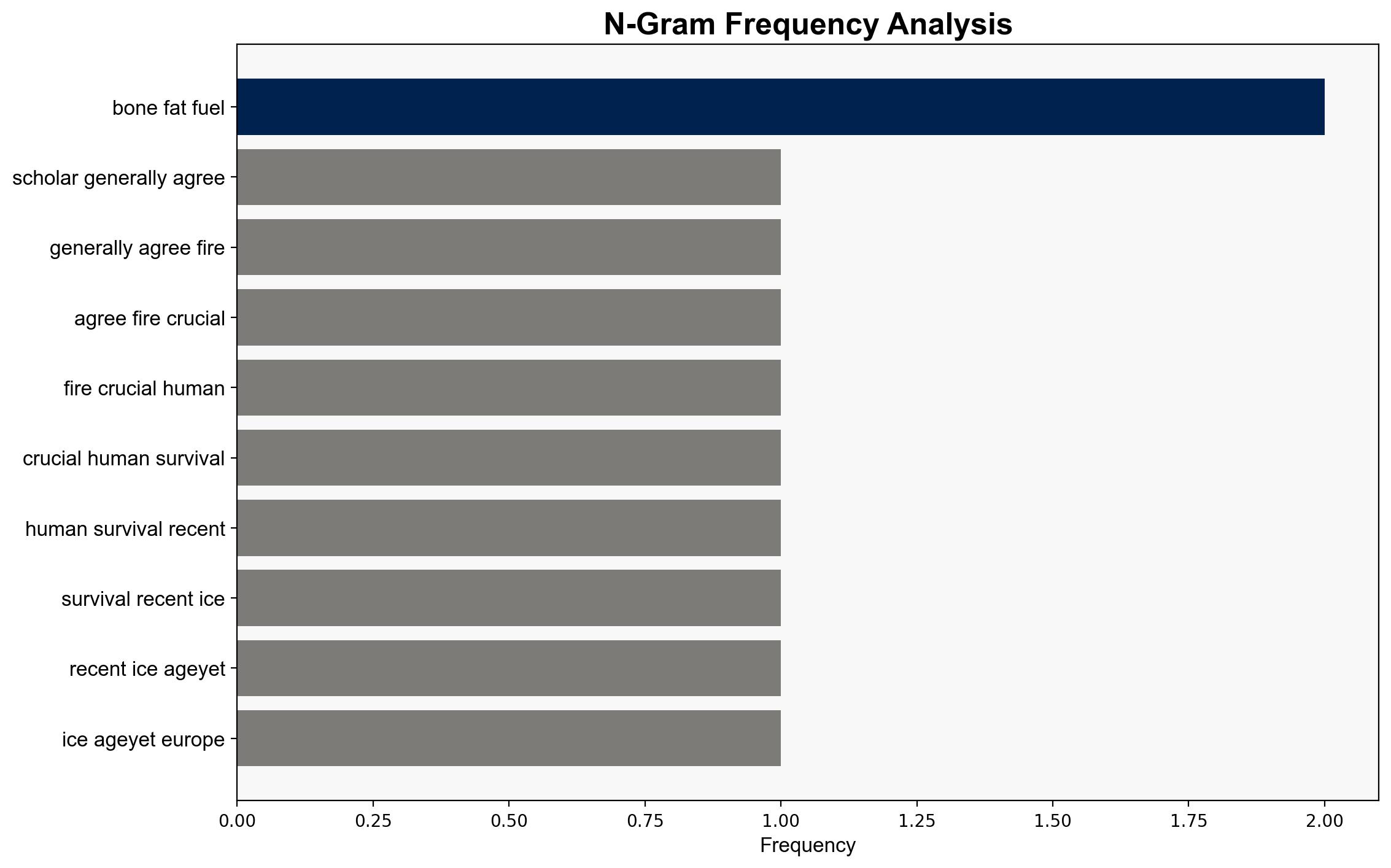Prehistoric Hearths Reveal Ice Age Hunter-Gatherers Were Masters of the Flame – Gizmodo.com
Published on: 2025-04-15
Intelligence Report: Prehistoric Hearths Reveal Ice Age Hunter-Gatherers Were Masters of the Flame – Gizmodo.com
1. BLUF (Bottom Line Up Front)
Recent archaeological findings from Ukraine have uncovered evidence of sophisticated fire use by Ice Age hunter-gatherers. These findings fill a critical gap in the understanding of pyrotechnology during the Last Glacial Maximum, highlighting the strategic use of fire for survival and social activities. Key insights include the use of bones and fat as fuel and the intentional construction of hearths for varying seasonal purposes. This research provides a deeper understanding of human adaptation to extreme climates.
2. Detailed Analysis
The following structured analytic techniques have been applied for this analysis:
General Analysis
The study of three prehistoric hearths in Ukraine reveals that Ice Age hunter-gatherers possessed advanced knowledge of fire management. The hearths, dating from 23,000 to 21,000 years ago, demonstrate the use of high-temperature fires, indicating efficient combustion techniques. The research employed geoarchaeological methods such as microstratigraphic analysis, micromorphology, and colorimetric analysis to determine the composition and temperature of the fires. The findings suggest a strategic use of resources, including spruce wood and animal bones, to sustain high temperatures necessary for various activities.
3. Implications and Strategic Risks
The implications of these findings extend to understanding human resilience and adaptability in extreme environments. The strategic use of fire by Ice Age populations underscores the importance of resource management and technological innovation in survival. This research may influence current studies on climate adaptation and resource utilization. However, the reliance on specific resources, such as spruce wood, highlights potential vulnerabilities in resource availability during climatic shifts.
4. Recommendations and Outlook
Recommendations:
- Encourage further interdisciplinary research to explore the technological innovations of prehistoric populations.
- Develop educational programs to enhance understanding of historical climate adaptation strategies.
- Promote the conservation of archaeological sites to preserve evidence of ancient human activities.
Outlook:
In the best-case scenario, continued research will lead to a comprehensive understanding of prehistoric human adaptation strategies, informing modern climate resilience efforts. In the worst-case scenario, insufficient preservation efforts could result in the loss of critical archaeological evidence. The most likely outcome is a gradual increase in interdisciplinary studies, contributing to a nuanced understanding of human history and adaptation.
5. Key Individuals and Entities
The report mentions significant individuals such as Philip R. Nigst, William Murphree, and Marjolei. These individuals have contributed to the research and findings discussed in this report.




